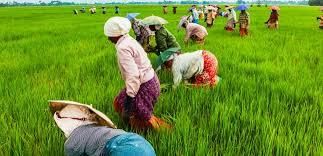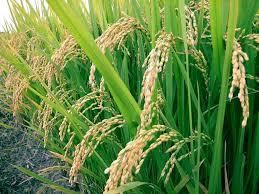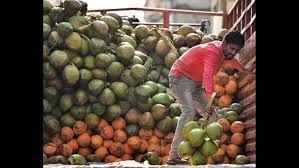Goa: Agriculture | Goa State PSC (GPSC) Preparation - GPSC (Goa) PDF Download
Salient Features of Indian/Agriculture of Goa

- Subsistence Agriculture: Subsistence agriculture, practiced in India for centuries, continues to be prevalent in many regions despite significant changes in agricultural practices post-independence.
- Pressure of Population on Agriculture: Even with growing urbanization and industrialization, around 70% of India's population remains dependent on agriculture, either directly or indirectly.
- Mechanization of Farming: The Green Revolution in the late 1960s and early 1970s brought significant advancements in agricultural machinery and equipment. However, full mechanization of farming in India is still not achieved.
- Dependence on Monsoon: Despite substantial expansion of irrigation infrastructure since independence, only about one-third of India's cropped area is irrigated. Consequently, two-thirds of the cropped area still relies on the unpredictable and unreliable monsoon, a situation worsened by climate change.
- Variety of Crops: India’s diverse topography, climate, and soil types allow it to grow both tropical and temperate crops. This diversity is rare, with only a few countries in the world matching India's variety.
- Predominance of Food Crops: Given the need to feed a large population, Indian farmers primarily focus on food crop production. However, recently, the area dedicated to food crops has declined as land is being repurposed for more commercially profitable uses.
- Seasonal Patterns: India experiences three distinct agricultural seasons: kharif, rabi, and zaid. Specific crops are associated with each season; for example, rice is a kharif crop, while wheat is a rabi crop.
Important Crop of Agriculture of Goa
- Fruits: Mango, Cashew, Coconut, Banana, Pineapple, Jackfruit, Arecanut, etc.
- Field Crops: Paddy, Ragi, Sugarcane, Groundnut, Cowpea, etc.
- Vegetables: Brinjal, Bhendi, Chillies, Cucumber, Pumpkin, Gourds, Musk Melons, Red Amaranthus, Radish, Knol-Khol, Cabbage, Bottle Gourd, Long Beans, Cluster Beans, etc.
- Flowers: Jasmine, Crossandra, Dahlia, Hibiscus, Marigold, Orchids, Gerbera, Anthuriums, Gladiolus, etc.
- Spices: Black Pepper, Nutmeg, Kokum, Turmeric, Cinnamon, etc.
- Tubers: Colocasia, Yam, Elephant Foot, Dioscorea, Sweet Potato, etc.
- Agricultural Overview of Goa
- Dependency on Neighboring States: Goa, being a small state, relies on neighboring states for milk, poultry, and vegetables.
- Major Crops: Rice, cultivated during the rainy season from June to September, is the primary crop, followed by pulses and small millets.
- Plantation and Garden Crops: Major plantation crops include areca nut, coconut, and cashew. Garden crops feature pineapple, mango, bananas, and jackfruits. Forest resources also provide various barks and bamboo canes.
- Economic Contribution: Agriculture supports one-fourth of Goa's population but only contributes 15 to 16 percent to the state's income.
- Challenges: Rapid urbanization is reducing the availability of agricultural land. With 78 percent of agricultural land still reliant on rainfall and 80 percent of land holdings being below 2 hectares, irrigation is insufficient, and commercial farming is limited.
- Government Initiatives: The government promotes nurseries and tissue culture laboratories for high-quality planting material. The Sagar Caju nursery at Assonara is among the largest in Asia. Watershed techniques are used to recharge groundwater and harvest rainwater.
- Fishery Resources: Goa's coastline is rich in fishery resources, with local fishermen catching a variety of fish such as sharks, mackerels, sardines, seer fish, silver belly, pomfrets, butter fish, prawns, crabs, and squids. Fishing nets are often set up below bamboo poles that jut out of the water, trapping fish as the water recedes during low tide.
Major Crop of Agriculture of Goa

Rice Crops
Importance of Rice in the Region
- Staple Food Crop: Rice is the staple food crop, forming the basis of the main diet for the majority, typically paired with fish curry.
- Cultural Heritage: Rice holds cultural significance across all religions in the region, being used in celebrations and ceremonies ranging from birthdays and weddings to funerals.
- Harvest Celebrations: The Christian community celebrates the rice harvest season through church events.
Rice in India
- Key Food Crop: Rice is the most vital food crop in India, primarily grown as a Kharif (summer) crop.
- Cultivated Area: It covers about one-third of the country's total cultivated area and feeds over half of India's population.
- Consumption: The majority of the Indian population consumes rice.
Cultivation Conditions
- Temperature: Rice thrives in hot and humid conditions, with an ideal mean monthly temperature of 24°C and an average temperature range of 22°C to 32°C.
- Rainfall: Suitable rainfall for rice cultivation ranges from 150 to 300 cm. In regions like Punjab, Haryana, and Western Uttar Pradesh, where rainfall is below 100 cm, rice is grown using irrigation.
- Soil: Rice can be cultivated in various soil conditions, but deep clayey and loamy soils are ideal. It is primarily grown in plains, but also in unique locations such as below sea level in Kuttinad (Kerala), on hill terraces in the northeastern part of India, and in the valleys of Kashmir.
Coconut Palm and Cashew in Agriculture of Goa

Coconut Palm
- Cultural and Economic Significance: The coconut palm is immensely significant to Goans, utilized extensively for various purposes.
- Maddi or Feni Production: The sap or juice from the coconut palm is used to produce the famous Goan drink, Maddi or Feni.
- Uses of the Coconut Palm:
- Coir: Husks provide coir for handicrafts like ropes, mats, and fishing nets, supporting local livelihoods.
- Kopra: Used for cooking oil, cosmetics, and industrial products.
- Fronds: Used for making baskets and thatching roofs.
- Nut: Essential as a cooking ingredient; coconut milk is a key ingredient in Goan fish curry.
- Tender Coconut Water: Nutritious and refreshing.
- Palm Juice: Fermented to produce "Toddy" or Maddi, a popular drink in Goa and an export product.
- Economic Impact: Coconut production significantly boosts the Goan economy, with over 100 million coconuts grown extensively.
- Cultivation Requirements: Growing palms requires the right fertilizers and careful attention to prevent spoilage.
- Toddy and Feni Production:
- Unfermented Toddy: A sweet and nourishing drink.
- Palm Jaggery: Produced by boiling and crystallizing toddy, used in Goan sweets.
- Urrak: Produced from the first fermentation of toddy, popular in Goan tavernas.
- Palm Feni: Produced from the second distillation, a highly potent and sought-after spirit.
- Seasonal Challenges: Coconut extraction slows during the monsoon due to wind and slippery conditions.
- Sustainability: Tapping helps in refining the palm tree.
- Kalpavriksha: The coconut palm is known as the "all-giving tree" due to its numerous benefits.
Cashew Fruit
- Economic Significance: Equally important to the Goan economy as the coconut palm.
- Commercial Crop: Widely grown for its nuts and juice, which can be fermented to produce cashew feni.
The coconut palm and cashew fruit are integral to Goa's cultural heritage, economy, and daily life, with their multifaceted uses and products deeply embedded in the local traditions and commerce.
Ragi in Agriculture of Goa
Popularity and Uses in Konkan and Goa
- Popular Food: In Konkan and Goa, ragi (finger millet) is widely consumed, with common preparations including satva, pole (dosa), bhakri, ambil (a sour porridge), and pappad. Nachani Ladus are also popular in some families.
Growth and Cultivation
- Photoperiod Sensitivity: Finger millet is a short-day plant, thriving best with about twelve hours of daylight for most varieties.
- Geographical Range: It primarily grows between 20° N and 20° S, suitable for semiarid to arid tropical regions.
- Drought Tolerance: While considered drought-tolerant, finger millet prefers moderate rainfall (≥500 mm annually) compared to other millets like pearl millet and sorghum.
- Rainfed Cultivation: Most finger millet is grown under rainfed conditions, though irrigation can significantly boost yields.
- Rabi Crop in India: In India, finger millet is typically grown as a rabi crop.
Environmental Requirements
- Heat Tolerance: Finger millet is highly heat-tolerant, with optimal growth temperatures around 27°C and minimal temperatures above 18°C.
- Temperature Tolerance: It has a higher tolerance for cooler temperatures compared to other millets like pearl millet and sorghum.
- Elevation Range: It can be cultivated from 500 meters up to 2400 meters above sea level, including regions like the Himalayas.
- Soil Adaptability: Finger millet can grow in various soil types, including highly weathered tropical lateritic soils. It tolerates soil salinity to some extent but requires good drainage and moderate water-holding capacity.
- Soil pH: It can grow in moderately acidic soils (pH 5) as well as moderately alkaline soils (pH 8.2).
Department of Agriculture of Goa
The Agriculture, Horticulture, and related activities in Goa are planned, executed, and monitored by the Directorate of Agriculture, which is headquartered at Krishi Bhavan, Tonca-Caranzalem. The Directorate operates through various Taluka level and other offices across the state.
Duties and Functions of the Directorate of Agriculture
- Planning and Execution: Plan, execute, and monitor agricultural development programs in line with state and central sector policies. Provide advice to the government on agricultural policy planning.
- Farmer Welfare: Implement measures aimed at improving the welfare of farmers in Goa.
- Budgetary Control: Exercise budgetary control over agricultural development programs and other activities assigned to the Directorate.
- Legislative Enforcement: Enforce state and central government acts and rules related to agriculture as they are updated.
- Government Directions: Execute actions and directives as assigned by the government based on its decisions.
FAQs on Goa: Agriculture - Goa State PSC (GPSC) Preparation - GPSC (Goa)
| 1. What are the salient features of agriculture in Goa? |  |
| 2. What is the important crop of agriculture in Goa? |  |
| 3. Which major crop is grown in agriculture in Goa besides coconut palm and cashew? |  |
| 4. How is ragi significant in agriculture in Goa? |  |
| 5. Which department oversees agriculture in Goa? |  |
















